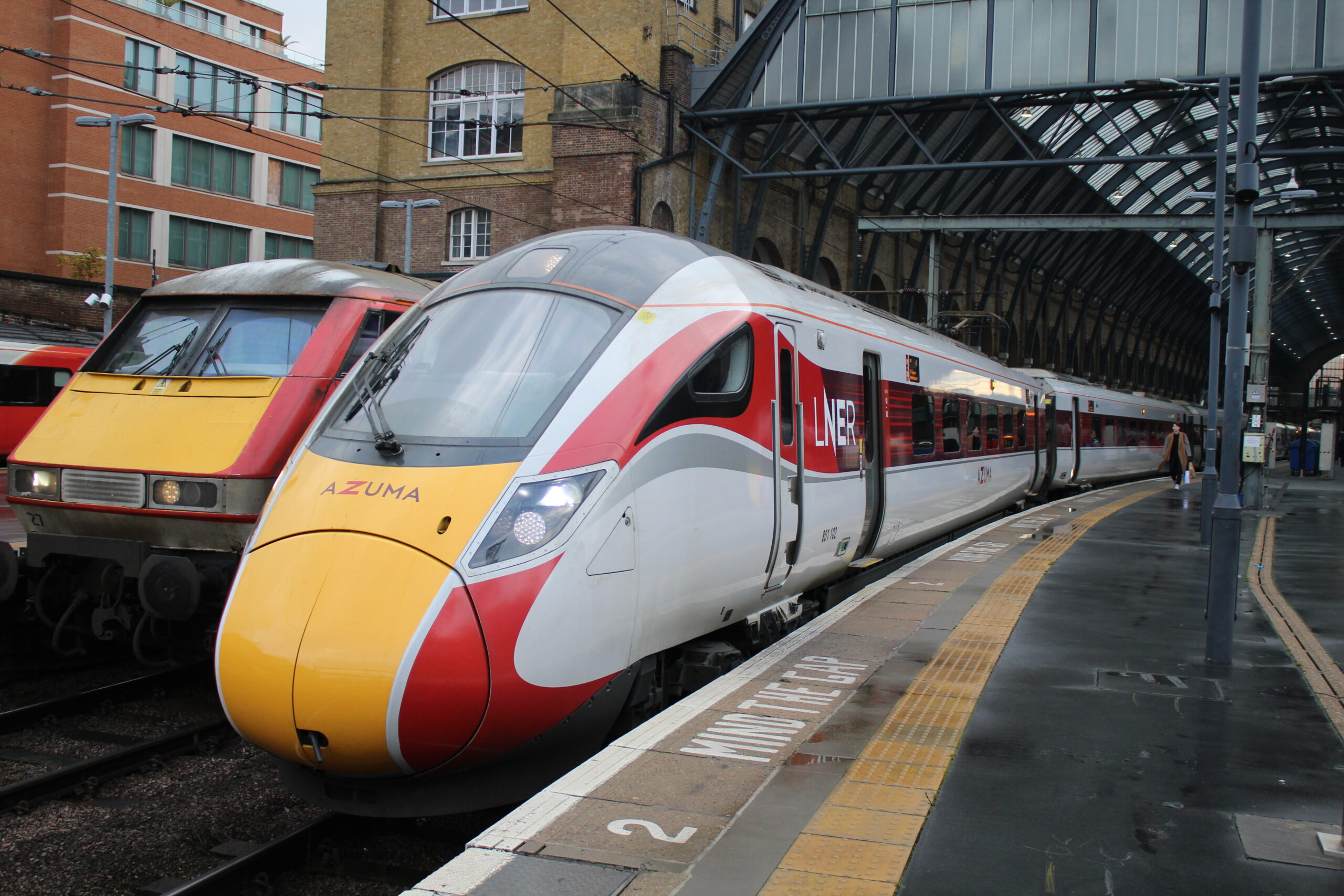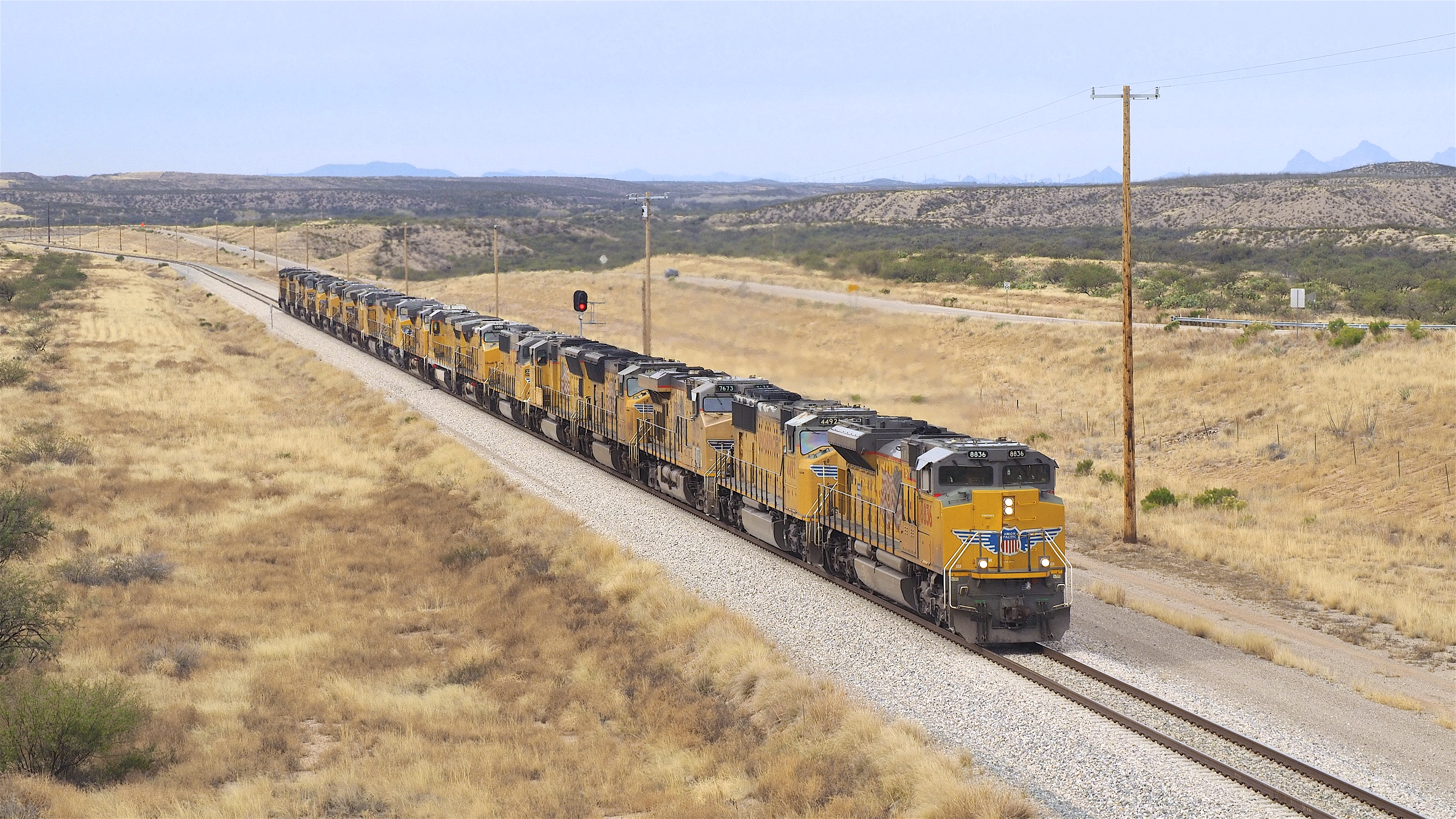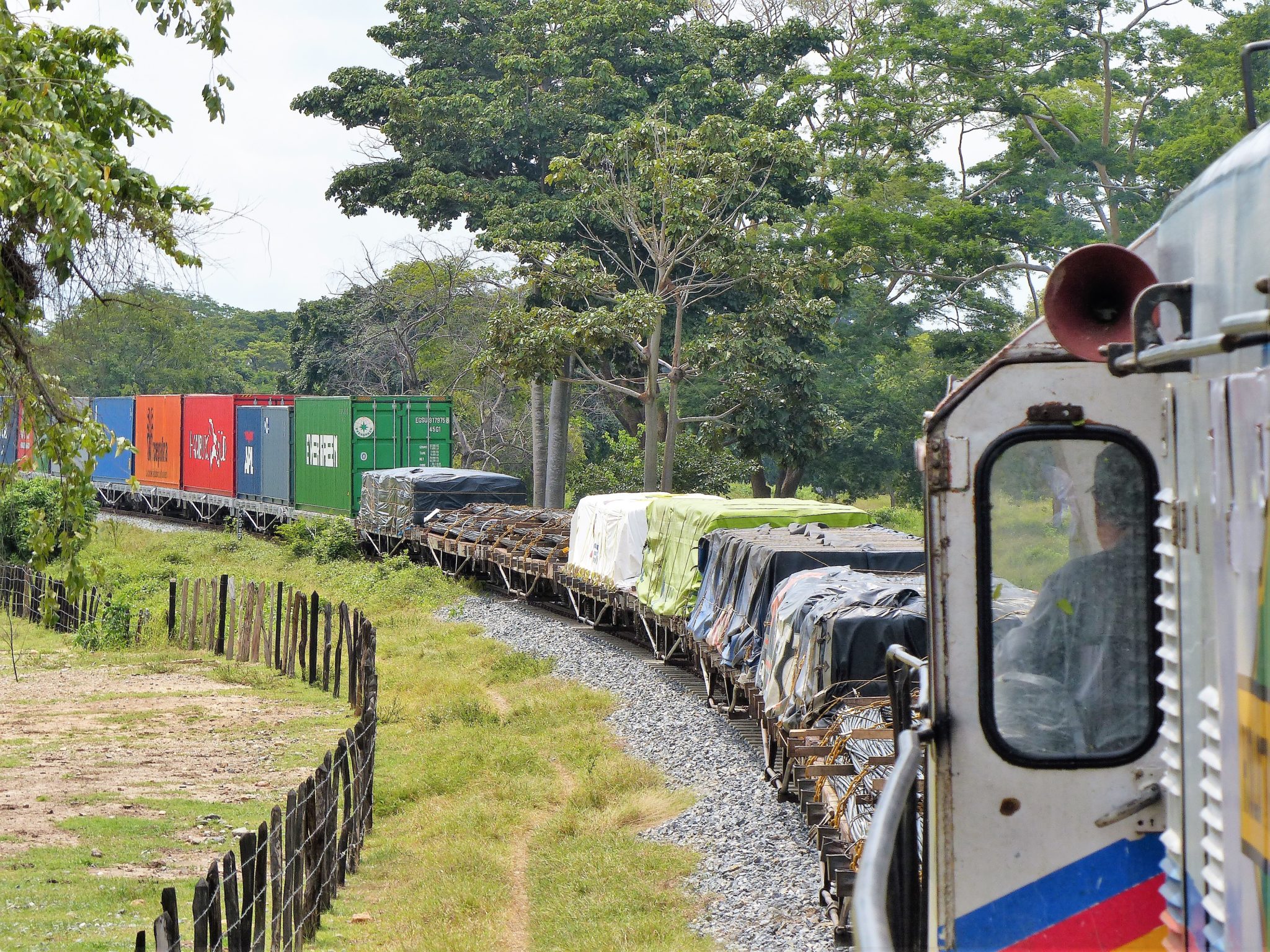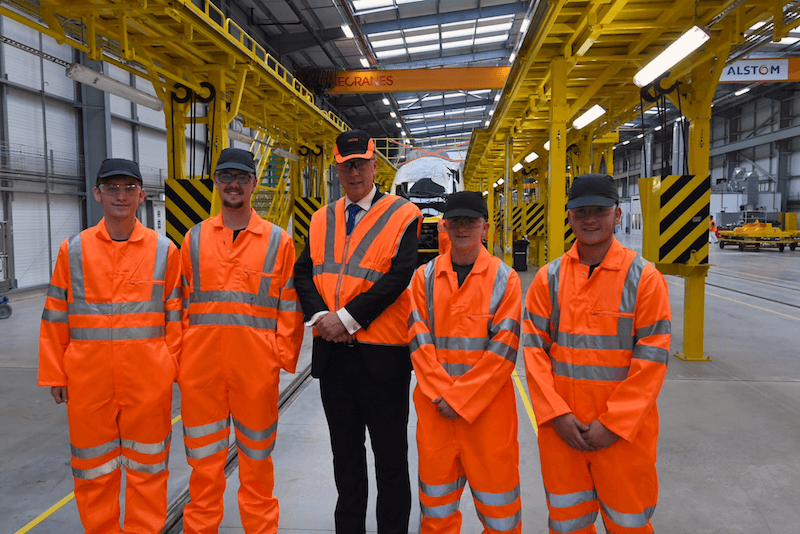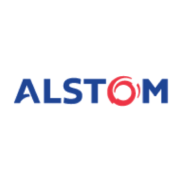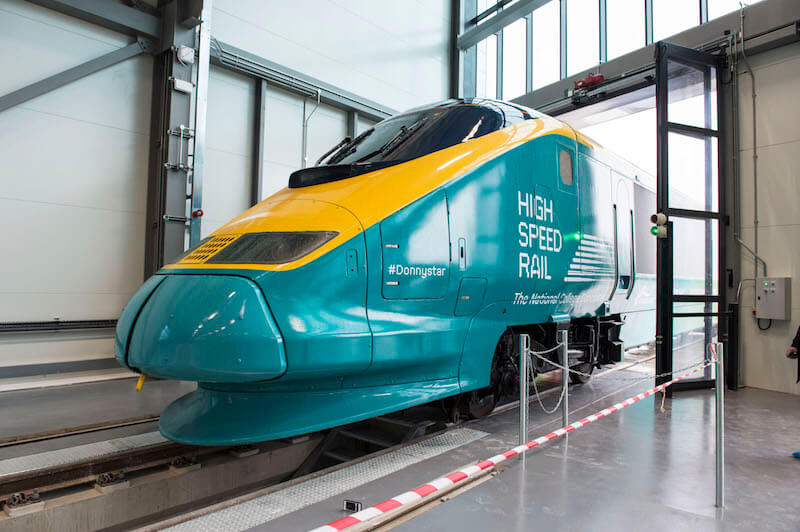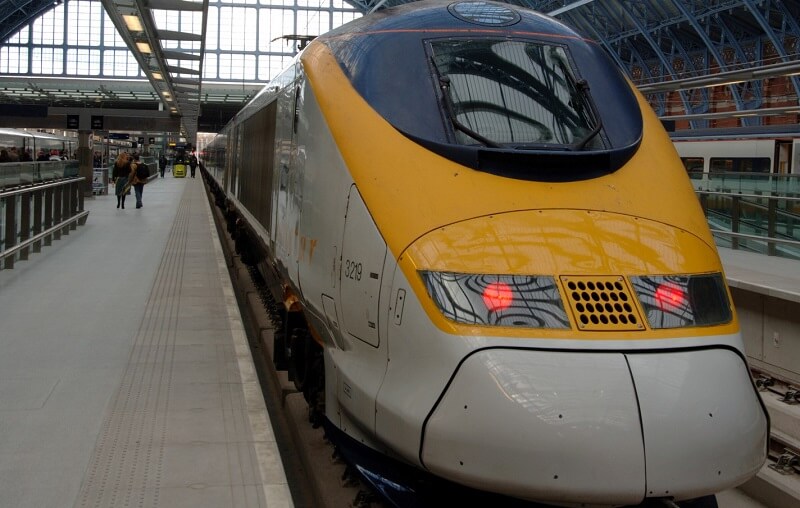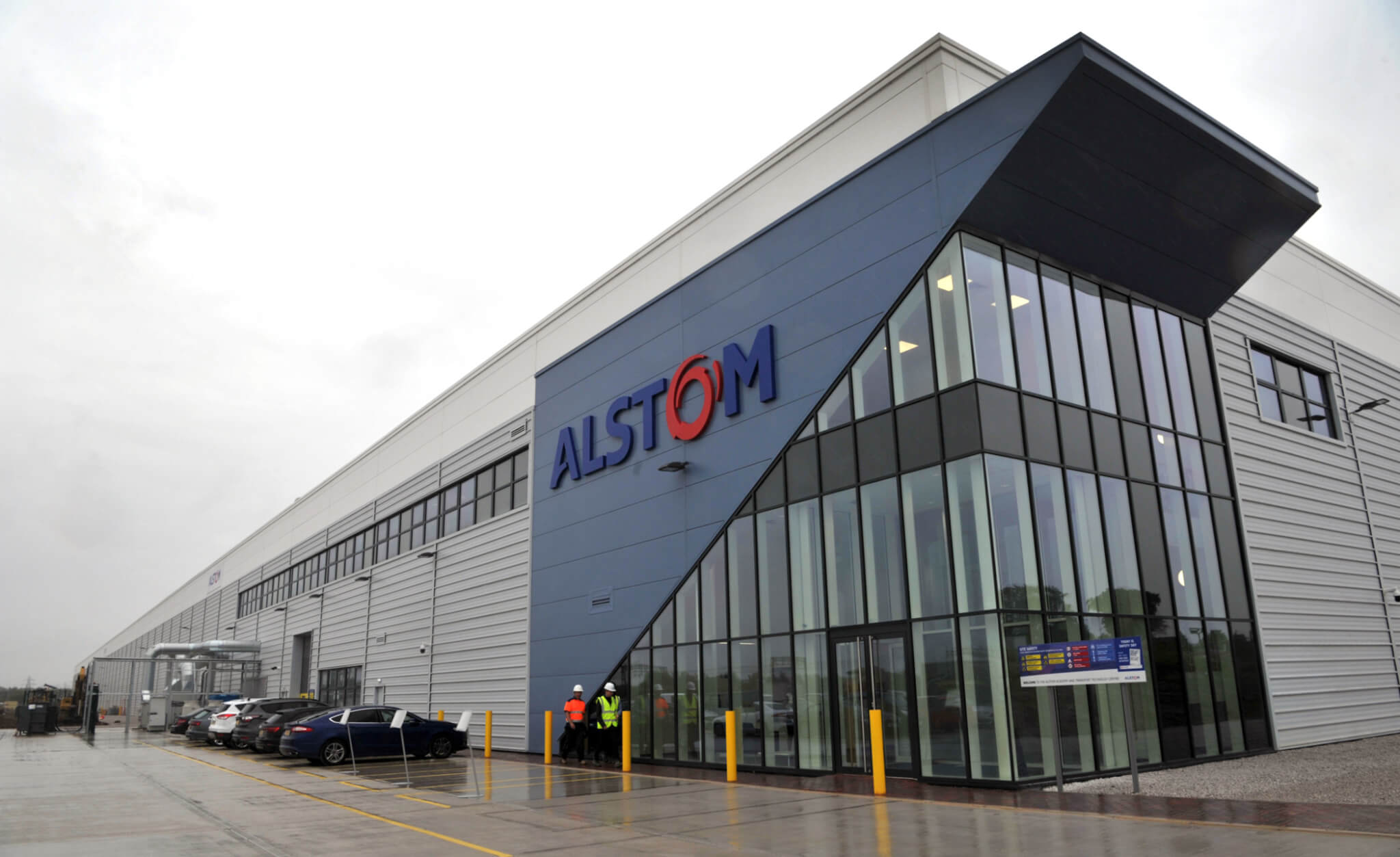Railway-News: The National College for High Speed Rail (NCHSR) is one of 5 National Colleges for ‘high-level technical training’ announced by the government in 2014. Why has the government prioritised high-speed rail for investment and why has the setup of the college happened so quickly in comparison to the other institutions?
Clair Mowbray: There is currently a shortfall of at least 69,000 engineers every year in the UK. This shortage has the potential to be addressed by a significant pipeline of over £460 billion worth of planned infrastructure investment across the public and private sectors. One of these projects is HS2 which, when it gets fully underway, will be Europe’s largest infrastructure project.
With 25,000 jobs expected to be created from HS2 alone, it’s understandable that the government is looking to invest heavily in the skills pipeline. Our two new campuses in Doncaster and Birmingham are dedicated to supporting projects like HS2 by solving the engineering, design, planning, manufacturing and construction skills gap. However, this is about much more than HS2 – it’s also about thinking longer term; how Britain’s railway network and infrastructure will be upgraded for future generations.
The speed with which the college has gone from initial conception through to opening its doors is testament to the immediate support we have had not only from the government but also from our industry partners, who continue to provide us with equipment, technology and a pipeline of learners, as well as helping to develop our courses to ensure that the skills we train our learners in are suited to creating the generation of learners that British industry requires.
RN: What does study at the college offer apprentices in addition to their regular training?
CM: The college is led by businesses and with their support, has been equipped with the latest rail, engineering and digital technologies to ensure that our learners gain the most up-to-date training and access to information; that’s whether they’re studying for our full-time certificate of higher education in high-speed rail and infrastructure, or joining the college through the apprenticeship route. Our courses offer access to dedicated workshop areas with real industry equipment, as well as cutting- edge tech and interactive platforms, including virtual and augmented reality training. This kind of training delivery means that our learners have a hands-on approach in both a practical and academic environment. The learning materials can be configured and adapted to suit their chosen areas of expertise.
The college had a soft launch in 2017 offering a limited number of pathways – Civil Engineering, Track, Systems Engineering and Leadership / Management. All 8 pathways will be offered from September 2018 and bring forward Command, Communication and Control, Power, Rolling Stock and Operations.
RN: Do you think that study at the college, will benefit learners more than the training on the traditional model of an apprenticeship?
CM: I think that access to the unique training environment at the college, along with our strong links to industry employers, will offer learners the best of both worlds. The college is able to support employers in finding suitable apprentices because we have prospective learners coming to us directly. Our full-time learners, who have invested to study in high-speed rail and infrastructure, are able to move into an apprenticeship and complete that course in two years rather than three. We’re striving for a healthy balance between practical and academic learning which can be tailored to suit the needs of each individual.
RN: How will the rail industry in the UK benefit from the increasing numbers of graduates from the college in its labour force? Will the ‘export’ of some of these workers have distinct benefits for the UK?
CM: At the moment, one in five British rail engineers is aged over 55 and the industry is notably lacking in diversity, with females for example accounting for only 6% of the railway engineering workforce. So the challenge that we are rising to is to improve diversity across the sector while also helping the industry to prepare for growth and to tackle existing skills shortages. The industry will benefit because we’re working with its businesses directly, to identify specific gaps and collaboratively appeal to a new generation of workers by highlighting the many opportunities that are on offer. Our learners will also gain transferable skills so that they can work in transport and infrastructure of a wide-ranging scale. Some of the businesses we are working with are international and do indeed offer secondments to locations around the world. The knowledge and understanding that our learners and future workers gain from spending time abroad can be invaluable, and in a globalised industry this definitely brings distinct benefits to the workforce.
RN: How does the setup of this, and similar colleges, change the model of apprenticeships and what long-term impact will it have on the development of vocational training in the future?
CM: Being one of five new National Colleges means we share a consistent approach towards our apprenticeships and training delivery, which is backed by both government and a growing network of industry stakeholders. We are developing a curriculum focused on being agile to employers’ needs, to ensure the outcomes are aligned with industry need and attract a diverse workforce with opportunities that are open to all.
The vocational training model has already changed in that we are driving expertise into a sector which is earmarked for future growth and development. In terms of the long-term impact, I expect the cutting-edge technologies we are investing in – such as augmented and virtual reality – will make a huge difference to how training is delivered in future. All of this is supported by our unique industry links which bring good access to the supply chain for HS2 and other major infrastructure projects. The way in which we’re receiving business support is a model that could be replicated in other specialist fields; with the supply of apprentices and donations of specialist kit and equipment, guest industry lecturers, and the development of new standards and qualifications, such as the Certificate for High Education (Cert HE) in High Speed Rail and Infrastructure.
FOR ALL THE LATEST INFORMATION, NEWS, IMAGES, AND VIDEOS ON ALL ASPECTS OF RAILWAY EDUCATION / TRAINING, PLEASE CLICK HERE.


















